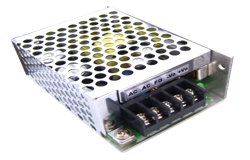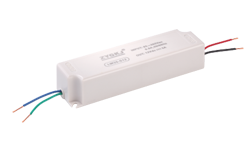noticias
Bidirectional DC DC Converter: Principles, Topologies, and Applications
Autor: Módulo de potencia ZYG Time: 2023-6-24
A bidirectional DC-DC converter is a power electronic device that can transfer electrical energy bidirectionally between two DC voltage levels. It is widely used in various applications, including electric vehicles, renewable energy systems, and battery energy storage systems. This article will explore the principles, topologies, and applications of bidirectional DC-DC converters.
Principles of Bidirectional DC-DC Converter
The main function of a bidirectional DC-DC converter is to transfer power from one DC voltage level to another. The power transfer can be either unidirectional or bidirectional. A bidirectional converter can transfer energy from a high voltage source to a low voltage load and vice versa. Bidirectional DC-DC converters typically consist of two power converters, each with its own power switch and control circuit. One converter operates in the forward direction, transferring energy from the input voltage to the output voltage, while the other converter operates in the reverse direction, transferring energy from the output voltage to the input voltage.
The operation of a bidirectional converter is controlled by a feedback loop that adjusts the duty cycle of the power switches to maintain the desired output voltage level. The duty cycle determines the amount of time the power switch is on during each switching cycle. By adjusting the duty cycle, the output voltage can be regulated to a desired level.
Topologies of Bidirectional DC-DC Converter
There are several topologies of bidirectional DC-DC converters, including full-bridge, half-bridge, and interleaved. Each topology has its advantages and disadvantages, and the choice of topology depends on the specific application requirements.
The full-bridge bidirectional DC-DC converter is a popular topology used in high-power applications. It consists of four power switches arranged in a bridge configuration. In the forward direction, the input voltage is applied across the diagonal of the bridge, while the load is connected across the other diagonal. In the reverse direction, the input and output terminals are swapped, and the converter operates in the opposite direction.
The half-bridge bidirectional DC-DC converter is a simpler topology that uses two power switches. In the forward direction, the input voltage is applied across one switch, while the load is connected across the other switch. In the reverse direction, the input and output terminals are swapped, and the converter operates in the opposite direction.
The interleaved bidirectional DC-DC converter is a more complex topology that uses multiple power converters in parallel. This topology has the advantage of reducing the input and output current ripple and improving the overall efficiency.

Applications of Bidirectional DC-DC Converter
Bidirectional DC-DC converters are widely used in various applications, including electric vehicles, renewable energy systems, and battery energy storage systems. In electric vehicles, bidirectional converters are used to transfer energy between the battery pack and the vehicle\’s electrical system. The converter can charge the battery pack when the vehicle is braking or decelerating, and it can discharge the battery pack to power the vehicle\’s electrical system when accelerating.
In renewable energy systems, bidirectional converters are used to transfer energy between the DC voltage level of the renewable energy source, such as a solar panel or wind turbine, and the DC voltage level of the load or the battery storage system. The converter can also transfer energy from the battery storage system to the load when the renewable energy source is not available.
In battery energy storage systems, bidirectional converters are used to charge and discharge the battery pack. The converter can charge the battery pack when excess energy is available from the grid or a renewable energy source, and it can discharge the battery pack to supply power to the load when needed.
Conclusion
In summary, bidirectional DC-DC converters are important power electronic devices that can transfer energy bidirectionally between two DC voltage levels. They are widely used in various applications, including electric vehicles, renewable energy systems, and battery energy storage systems. The choice of topology depends on the specific application requirements, and the operation of the converter is controlled by a feedback loop that adjusts the duty cycle of the power switches to maintain the desired output voltage level.
Anterior: ZP Series AC DC Converter – Efficient Power Conversion Solutions
Próximo: Medical Power Series: Empowering Healthcare Professionals and Patients for Better Health
informacion relevante
-
2023-5-4
AC-DC Power Supply: Efficient and Reliable Energy Conversion
AC-DC power supply is a device that is used to convert alternating current (AC) to direct current (DC) so that electronic devices can operate efficiently. The conversion of power from AC to DC is necessary because most electronic devices require a DC power source to operate. The AC-DC power supply is an essential component in many electronic devices such as computers, televisions, and audio equipment. It is designed to provide a stable and reliable source of power to ensure that the electronic device operates efficiently. The efficiency of the AC-DC power supply is critical to the overall performance of the device. One of the advantages of AC-DC power supply is its efficiency. The conversion process is designed to minimize the...
Ver detalles -
2023-8-2
Efficient AC to DC Converter for LED Lighting with 12V Output
Introduction: In recent years, LED lighting has gained popularity due to its energy efficiency and long lifespan. To power these LED lighting systems, an efficient AC to DC converter is required to convert the alternating current (AC) from the power source to the direct current (DC) needed by the LEDs. This article explores the importance of an efficient AC to DC converter for LED lighting and presents a detailed analysis of a converter with a 12V output. Advantages of LED Lighting: Before delving into the AC to DC converter, it is essential to understand the advantages of using LED lighting. LEDs are renowned for their energy efficiency, consuming significantly less energy compared to traditional incandescent bulbs. Additionally, LEDs have a...
Ver detalles -
2022-10-11
Para módulos de potencia de factor de forma pequeño, hay muchos proveedores para elegir. Entonces, cómo elegir un módulo de potencia que más le convenga. ¿Qué es un módulo de potencia de factor de forma pequeño? Un pequeño módulo de potencia es un componente electrónico que se utiliza para convertir la corriente alterna en corriente continua. A menudo se utilizan en dispositivos electrónicos para alimentar componentes internos. Los módulos de potencia de factor de forma pequeño están disponibles en una variedad de formas y tamaños y están diseñados para adaptarse a una variedad de aplicaciones diferentes. ¿Cuáles son los factores clave a considerar al elegir un proveedor? Al buscar proveedores, hay algunos factores clave a tener en cuenta. El factor más importante es la calidad del producto del proveedor....
Ver detalles -
2023-4-24
AC-DC Power Supply: The Ultimate Guide to Understanding and Choosing the Right One
An AC-DC power supply is an essential tool for powering electronic devices. It converts alternating current (AC) to direct current (DC), providing a stable and regulated voltage output. Understanding the basics of an AC-DC power supply and how to choose the right one for your needs is crucial for anyone working with electronic devices. In this guide, we will cover everything you need to know about AC-DC power supplies. AC-DC Power Supply Basics An AC-DC power supply consists of several components that work together to convert AC to DC. The main components are the transformer, rectifier, filter, and regulator. The transformer is used to step down the AC voltage from the mains to a lower voltage suitable for the rest...
Ver detalles -
2023-10-14
High Voltage Power Supply Module: Safely Empowering Electrical Systems
In today\'s world, with the ever-increasing demand for electricity, high voltage power supply modules play a crucial role in safely empowering electrical systems. These modules are designed to provide a stable and reliable source of high voltage power, ensuring the smooth operation of various devices and systems. In this article, we will explore the importance of high voltage power supply modules and how they contribute to the overall safety and efficiency of electrical systems. One of the primary functions of a high voltage power supply module is to convert low voltage input into high voltage output. This conversion process involves various stages, including rectification, filtering, and voltage regulation. By effectively managing these stages, the module ensures that the output voltage...
Ver detalles -
2023-9-21
Enhance Your PC Performance with a Modular Power Supply
A modular power supply is a key component in any computer system, responsible for providing stable and efficient power to all the components. Power supply units (PSUs) come in various types, including non-modular, semi-modular, and modular. Among these, a modular power supply is gaining popularity due to its versatility and ability to enhance PC performance. In this article, we will explore the benefits of using a modular power supply and why it is an excellent investment for your computer system. Firstly, let's understand what exactly a modular power supply is. Unlike non-modular PSUs, which have a fixed set of cables permanently attached to the unit, modular PSUs allow users to connect only the cables they need. This means that unnecessary...
Ver detalles


















